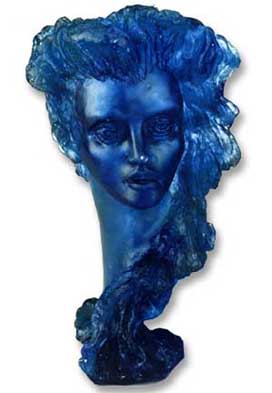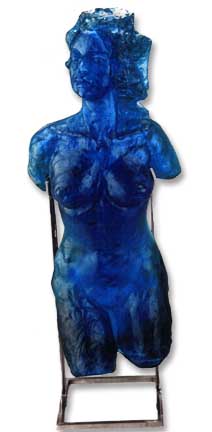| back |
|
|
||
 |
 |
|
|
|
|
|
|
|
||
| MARGOT GOTOFF
Margot Gotoff grew up in Europe. And South America, where art and artisanship is a familiar and intimate part of everyday life. It is to this early influence that she attributes her admiration for technical excellence in the arts and her love of the human figure as an art form. "Everything I create is modeled by hand from clay, I do not use life casts." From molds developed from fully formed human torsos, I pull the waxes from which I choose the fragments that are the basis for much of my work. These fragments can be cast in the media of bronze, aluminum, hydrastone or glass. For bronze she uses the "lost wax method" , mastered by the Greeks over twenty five hundred years ago. Wax is brushed to a thickness of about one-quarter inch into a negative mold taken from the clay original. The wax is then invested into a concrete-like envelope with wax chancels to the surface of the enveloping form added. This structure is then heated in the kiln until the wax drips out through the chancel, leaving behind an empty space where the wax had been. Molten Bronze is then poured in to fill the empty space. The cast glass process is somewhat different because molten glass will not continue to pour for as long as the bronze does. For glass-casting a negative plaster mold is made from the wax positive pulled from the original negative mold. The new plaster negative mold is built up along the edges and becomes a basin like receptacle into which glass is piled in chunks of various size. This plaster basin, complete with glass is placed into a kiln and heated until the glass liquefies completely and sinks to fill impressions left in the inside of the basin by the melted wax. The glass is then permitted to cool slowly. This process known as annealing, is extremely delicate and can take weeks or more for the glass must be restored to the same chemical structure as before heating.
|
||